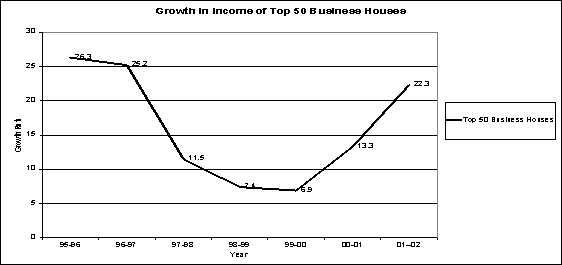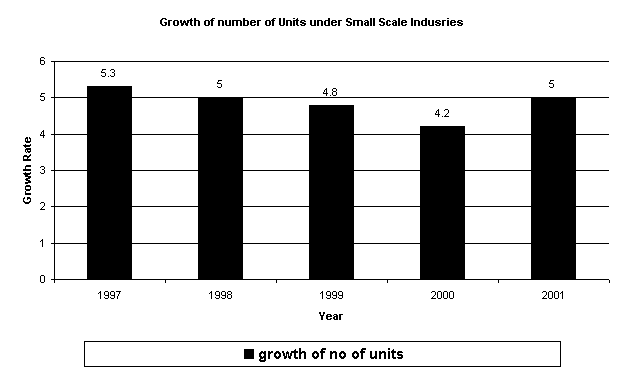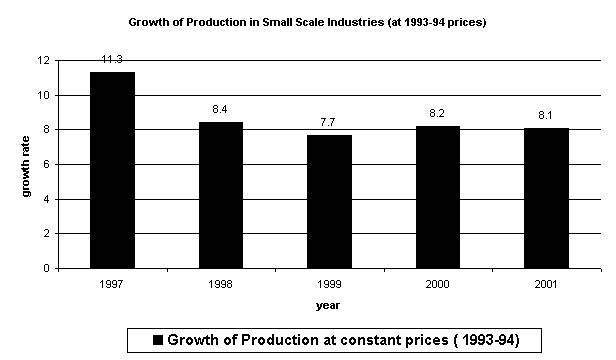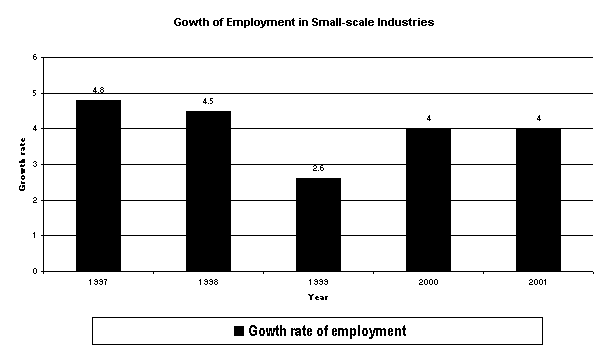 People's Democracy
People's Democracy
(Weekly
Organ of the Communist Party of India (Marxist)
No. 17
April 25, 2004
(Weekly
Organ of the Communist Party of India (Marxist)
|
Vol.
XXVIII
No. 17 April 25, 2004 |
THE industrial scenario of the country under the NDA rule does not correspond with the picture of a ‘shining India’, which was being painted by the NDA government through media advertisements till a few days back. It is evident from Chart 1 that industrial production as a whole experienced a decline during the period 1995-96 to 2003-04, with the index of industrial production falling to as low as 2.6 during 2001-02.
Chart 1: Index of Industrial Production in India

Source: CMIE, Monthly Bulletin, January 2004
PRO-BIG BUSINESS BIAS
The story behind the overall poor industrial performance during the tenure of this government gets clearer if we compare the growth in incomes of the industries falling under different size classes. Big business has enormously gained during this period and registered significant increases in their income growth. Chart 2 shows that the top 50 business houses had a real good time from the year 1998-99 following the advent of the NDA government. Their income growth ballooned from a growth rate of 7.4 per cent in 1998-99 to 22.4 per cent by 2001-02 in sharp contrast to what was happening to the rest of the industry during this period.
Chart 2

Source: CMIE, Corporate Sector 2002
The rest of the industry has done badly during the tenure of the NDA government, particularly the medium and small-scale industries. Chart 3 brings out starkly the pro-big business bias of the NDA government. It shows that while income growth has come down across all size classes of industries; the bottom 40 per cent has suffered the most.
Chart 3

Source: CMIE, Corporate Sector 2002
The small-scale industries are one of the major sources of employment in the Indian economy. The small-scale industries (SSIs) in India have been facing several institutional bottlenecks ranging from marketing, finance, infrastructure, technology, poor working environment etc. because of which they are unable to face competition from domestic big business as well as the MNCs. Opening of trade barriers in a backdrop of sluggish domestic demand has adversely affected the growth of SSIs, as they are not able to compete with the technologically more sophisticated foreign firms.
The decline in the growth of the number of total units as shown in Chart 4 substantiates the dismal picture of small-scale industries under the NDA rule.
Chart 4

Source:
Economy Survey, 2002-03
The growth of production of the small-scale industries also experienced a decline during this period. Therefore, not only was it the case that the number of small scale industries increased at a lower rate but the existent units produced much less.
Chart 5

Source:
Economic Survey, 2002-03
Employment growth in the small-scale industries also experienced a slowdown during this period. The growing unemployment experienced under the NDA rule is explained to an extent by the declining absorption of labour in the labour intensive small-scale industries.
Chart 6

Source: Economic Survey, 2002-03
Thus while big business has surely prospered under NDA rule, the scenario for the rest of the industry has been far from satisfactory. Most importantly, the small-scale industries have been badly hit affecting employment growth in that sector, which provides for a big proportion of industrial employment. In this backdrop, the claims of a ‘shining’ India would be completely unacceptable to an overwhelming majority of those who are associated with the industrial sector of our country.